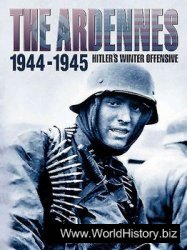AIR BRAZIL, S. A.: Brazil (1991). Following the government’s partial liberalization of the national airline industry, Air Brazil is established at Rio de Janeiro in April 1991. Majority ownership is held by Lider Taxi Aereo, S. A. in partnership with Sao Paulo-based TNT SAVA, S. A., a TNT Worldwide Express unit. A fleet of 3 British Aerospace BAe 146200s is assembled.
Hoping to become the first carrier to place jetliners on the “Air Bridge” to Sao Paulo, the company is unable to get them into operation before competitors VARIG Brazilian Airlines (Viacao Aerea Rio-Grandeuse, S. A.), VASP Brazilian Airlines (Viacao Aerea Sao Paul, S. A.), and Transbrasil, S. A. (Linhas Aereas), which had been operating Lockheed L-188A Electras.
Still, the company inaugurates its eight daily roundtrips over the route on July 20. Lider Taxi Aereo, S. A., seeing that the new entrant’s one potential advantage has been lost, abandons its new entrant in December, returning the BAes to their manufacturer.
AIR BREMEN, GmbH.: Germany (1989-1990). AB is formed at Bremen Airport in the spring of 1989 to offer regional commuter service. Former KLM (Royal Dutch Airlines, N. V.) executive Augustinus Boots is named managing director and his initial fleet comprises two, later four, SAAB 340As. Scheduled services are inaugurated from Bremen to London (STN), Paris, Copenhagen, Vienna, Os-nabruck, Brussels, and Amsterdam. A total of 25,000 passengers are flown on the year.
During the first six months of 1990, discussions are held with the Dutch flag carrier concerning a possible capital investment and cooperative agreement. The negotiations fail in early July when KLM (Royal Dutch Airlines, N. V.) elects to take shareholding in the larger French regional Air Littoral, S. A. and an effort to interest Hapag Lloyd is also unsuccessful. A code-sharing agreement is signed with American Airlines in early August and provides for the connection of the U. S. major’s flights from Chicago and New York with AB’s service to Brussels.
AA’s first code-sharing agreement with a European carrier comes too late to help AB achieve fiscal viability. Faced by higher fuel bills in the wake of the Mideast crisis, the City of Bremen and Sweden’s Salenia refuse, on August 22, to provide the capital necessary to keep the airline going.
Adolph Horn is appointed receiver and the regional is forced to close in October after a $10-million rescue plan, involving a subsidiary of the former East German carrier Interflug DDR Airlines, collapses.
AIR BRETAGNE SERVICE, S. A.: France (1990-1991). Organized at Bais in 1990, this small commuter names Joseph Jeuland as general manager and assembles a fleet comprising 2 Beech King Air 100s and 1 Piper Cheyenne II. Revenue services are launched to regional destinations; however, insufficient return is earned to justify continuance and the service ceases in 1991.
AIR BRIDGE CARRIERS, LTD. (ABC): United Kingdom (19721992). Armstrong-Whitworth Argosy 102 lessor Field Aircraft Services founds this charter subsidiary in August 1972 in order to find employment for the three Argosys left idle upon the collapse of Sagittair, Ltd. The three freighters return to service when ABC is created by the Hunting Group in November and transport flowers and produce between East Midlands Airport and the islands of Jersey and Guernsey.
One Argosy is sold in April 1974, being replaced by a Vickers Viscount 808. Freight charters are mounted to Scotland and Europe, including Zagreb.
The Viscount is converted to “combi” status in February 1975 and undertakes Lydd-Beauvais replacement service for Dan-Air/Dan-Air
Services, Ltd.’s coach-air operation. A major contract is initiated with Rolls Royce to fly engine parts to and from Germany and Italy. During 1976-1978, Managing Director J. D. Capstick’s carrier has a 50-employee workforce and a fleet comprising 3 Argosy 102s, 1 Vickers Vanguard V953C Merchantman, and 2 Handley Page Heralds.
During the next 15 years, the Argosy fleet is reduced, first to two machines, and then none; however, the company flotilla is increased by the addition of six Merchantmen freighters. Additional destinations are found in Europe, Africa, and the Middle East and the company becomes a subsidiary of Hunting Associated Industries. The employee population averages 130 and some 20,000 tons of freight are transported annually.
An AW-650 Argosy 102 with two crew, is damaged beyond repair as the result of the collapse of the right main landing gear during the freighter’s Belfast landing on April 17, 1982; there are no injuries.
During the late 1980s, the carrier begins to emphasize European carriage and comes to restrict its operations to 15 Continental destinations in 10 countries. The company now becomes an EC pioneer in the delivery of overnight express parcels, accepting contracts from both Federal Express and United Parcel Service (UPS).
The 6 Merchantmen increase freight traffic during the first nine months of 1988 by 48.3% to 12.8 million FTKs. A Lockheed L-188C is leased from a U. S. concern late in the year for use as a freighter.
The workforce is increased by 50% in 1989 to 180. The fleet, too, is changed. Half of the Merchantmen are withdrawn and are replaced by a combination of 6 Lockheed L-188C Electras and 1 Boeing 737-200QC, the company’s first jetliner. Traffic is level at 12.98 million FTKs.
Company employment is cut 11.1% in 1990 to 160. Cargo tumbles 12.6% to 11.34 million FTKs, due largely to the uncertain political situation following Iraq’s August invasion of Kuwait.
Operations continue apace in 1991 and in 1992 Chairman G. H. Williams and Managing Director M. P. Timpson employ 185 workers.
In September, the company is renamed Hunting Cargo Airlines, Ltd.




 World History
World History









